Inside: Learn 7 foods that can support better behavior in kids. Plus, grab a free printable cheatsheet at the end. Disclosure: Post contains affiliate links, which means if you make a purchase, at no additional cost to you, I may earn a small commission.
I’ll never forget the time I gave my son a watermelon flavored Jolly Rancher sucker. Worst day ever. It was so bad my husband and I stared at each other with our jaws hanging wide open.
We were astonished at the Tasmanian meltdown occurring before us.
I heard of food dye possibly affecting your child’s behavior, but I’d never seen such a strong correlation. That night—after a raging meltdown that left me asking ‘why is my child was so angry and aggressive’—my son fell asleep naked in a waterless bathtub with a towel covering him.
If you asked me to explain how it happened, I honestly could not tell you.
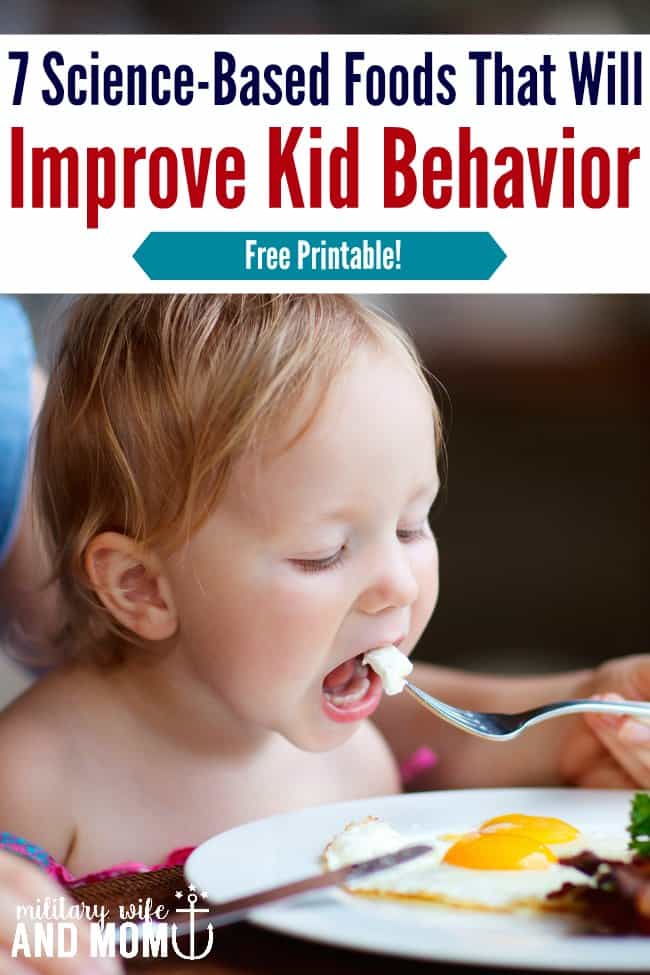
But here’s the thing.
We live in a society that talks endlessly about the foods our kids shouldn’t eat. You probably heard things like fruit cups are all sugar. Or never give your kids red food dye. Or Kraft mac and cheese is the devil.
I think we’ve all drawn the conclusion that food dyes, chemical additives, too much sugar and highly processed food can negatively impact your child’s behavior. Just see here, here and here and you’ll get the idea.
But with all this attention on what our kids shouldn’t be eating…
We are forgetting something.
We are so focused on what not to do, we are forgetting 7 key foods that pack a major nutritional punch and carry the core nutrients that kids need to keep their brains and bodies healthy and thriving.
But first a disclaimer…
I’m just a mom with an internet connection. I’m not a doctor or a nutritionist. You should make an appointment with a professional if you have legit concerns. Anything you read here is for informational purposes only. That said, I hope this saves you from hours on the Google machine looking for answers.
Related:
Best foods to support behavior in kids.
The list is not all encompassing and represents only a portion of the nutrition a child needs, but I wanted to keep it simple, manageable and easy for myself and other parents to implement.
Because–let’s be real here–mama ain’t got time to create a custom nutrition plan!
The list focuses on helping kids obtain magnesium, zinc, vitamin D, vitamin B, iron, protein and omega-3s in the fastest and most efficient way possible. Here’s why.
- Magnesium enables brain electrical activity and helps to calm our central nervous system. This nutrient has shown to increase attention span by improving brain activity and calming our nervous system.
- Zinc enables neurotransmitter function and is necessary for the metabolism of DHA fat in the brain. It also regulates melatonin which plays a major role in sleep and mood. Zinc is shown to improve social behavior and help kids stay calm.
- Omega-3s are how kids get vital DHA to support their growing brains. This nutrient is pivotal for boys, who have a 3 times higher need for essential fatty acids than girls. Early results of a study showed that children who had increased amounts of omega-3 fatty acids performed better in reading and spelling and had fewer behavioral problems.
- Vitamin D enables the function of every single cell in the body and it plays a vital role in attention and brain function. Keeping good vitamin D levels improves energy, mood and sleep in kids. The best way to get vitamin D is from the sun, but food is another way.
- Vitamin B is essential for the production of neurotransmitters like serotonin which regulates mood and behavior. Researchers found kids with low vitamin B were more likely to struggle with learning and have behavioral problems.
- Iron plays a major role in attention, mood and energy. This is especially true of kids under the age of two, who are undergoing the most rapid brain development of their lives. Iron deficiency can contribute to long term problems with attention and mood, so keeping these levels healthy is super important.
- Protein is the building block of your child’s brain and body. Keeping a diet rich in protein keeps kids motivated and energized. High quality protein in diet helps to support behavior, attention and social function.
While many nutrients play a key role in mental and physical health, the ones listed above seem to be the heavy hitters that kids don’t get enough of because–you guessed it–too much processed food.
Now that you’ve seen how these 7 key nutrients are crucial to supporting your child’s healthy growth, development and behavior, let’s explore 7 foods that will help your child get those nutrients efficiently.
Quinoa
This superfood contains high amounts of protein, fiber, magnesium, and zinc. In our key nutrient list, it also contains some B vitamins and Omega-3s. If there is any food we should be feeding our kids, it’s this one. And for the most part, it’s easy to prepare, mix into dishes you regularly make, and it’s palatable for kids. Quinoa is easy to use in place of any grain like pasta or rice that you are already using.
Easy Kid-Friendly Quinoa Recipes
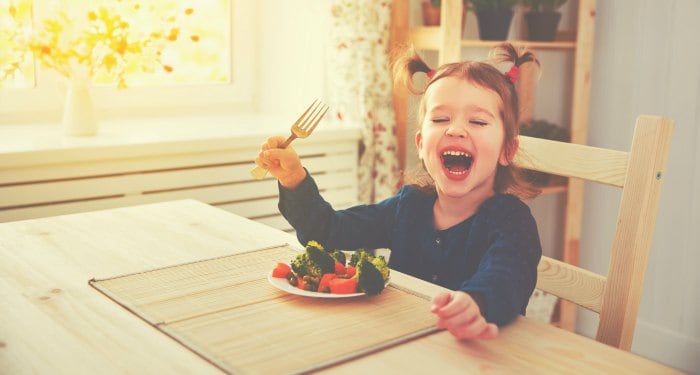
Chia Seeds
These tiny black seeds pack a huge punch, containing significant amounts of protein, fiber, omega-3s and zinc. We buy ours off Amazon here, but you can find them at any local health food store and sometimes even a regular grocery store. They are so small and easy to sprinkle into any dish. We love them in breakfast foods and smoothies. Soak them first and they’ll blend it easy to whatever you are cooking.
Easy Kid-Friendly Chia Seed Recipes
I also LOVE these Happy Tot pouches because they have Chia already blended it. These make it so easy if you are struggling with kids eating vegetables and getting Omega-3s
Spinach
Now this is a tough one because it’s not a favorite among kids, but there are some ways to blend this veggie into your dishes. Here’s why you don’t want to skip it: Spinach is an awesome source of magnesium and iron (key nutrients from our list) but it also contains a slew of other nutrients and high levels of antioxidants.
Easy Kid-Friendly Spinach Recipes
Again if you are struggling with getting your kids to eat these foods, the Happy Tot pouches are a great alternative some of the time. Of course, we want to offer these foods in something besides a puree, but it’s a great compliment. And it’s easy!
Kale
This is another challenging vegetable to get kids to each because it’s very much a dark leafy vegetable. But kale is a must-have superfood for kids! It’s a great source of vitamin B6, iron, magnesium, zinc, omega-3s and protein…on top of many other key nutrients.
Easy Kid-Friendly Kale Recipes
Wild salmon
Wild salmon, or another fatty fish such as tuna or mackerel, is key to ensuring your child is getting enough omega-3s. The sources in other foods listed above and below are great, but oil from fatty fish like salmon is really your best option. If you can get your child to each fish once per week, it’s going to help boost those omega-3s a ton! This super fish is an amazing source of vitamin B12, B5 and B3, vitamin D, omega-3s, and protein.
Easy Kid-Friendly Salmon Recipes
Eggs with yolks
Eggs are an incredibly cheap way to nourish your kids. They contain a ton of vitamin D, vitamin B12 and protein, in addition to many other nutrients. Just make sure you keep the yolk! Most of the vitamins and minerals in an egg are lost if the yolk is discarded.
Easy Kid-Friendly Egg Recipes
Organic beef
Organic grass-fed beef is loaded with vitamin B12, B3 and B6, iron, protein and zinc. The grass-fed is a key component because it delivers up to 5 times the omega-3s as grain-fed beef (aka “regular cows”). There is a generous amount of nutrition info that guides people away from red meat; however, for kids this is a food that packs nutrition they need.
Easy Kid-Friendly Beef Recipes

Will this really help improve behavior?
Basic science and physiology tells us that these nutrients are vital for kids healthy development. Research takes it a step further and shows us that not keeping these nutrients–zinc, magnesium, omega-3s, protein, vitamin B, vitamin D and iron–at good and healthy levels can negatively impact behavior, mood and ability to think. This goes for both kids and adults.
Here’s the best part…
There is no downside to incorporating these foods into your child’s diet! There is no dairy, gluten, soy or nuts in any of these foods, making it easy for all kids to enjoy regardless of allergies.
And who knows? There’s a good chance eating these foods could have a positive impact on your mood, energy and ability to focus too.
Now that’s a risk worth taking!
Print this free printable checklist.
This post comes with a free printable checklist to help with picky eating! Let your kids challenge themselves to circle all the fruits and vegetables they’ve tried. Plus, get an “Eat the Rainbow” placemat for mealtimes.
Here is a sneak preview!
Download Your Free Printable
- Download the checklist. You’ll get the printable, plus join my weekly newsletter!
- Print. Any paper will do the trick, but card stock would be ideal.
- Place it on your refrigerator. Check things off as you go and don’t forget a thing!
Want more on parenting?
- 9 Genius Phrases to Use When Parenting a Strong Willed Child
- How to Get Your Kids to Eat Healthy Without Using Bribery
- 2-Year-Old Not Listening? Try This Remarkable Tip
- What and How Much Should a Toddler Eat (Advice from a MD)
- Is Food Causing Depression and Anxiety in Kids? How Food Affects Mood

I've created a free email series just for you! If you are struggling with teaching your child to listen, this series will help transform your parenting. Yes, really. I've seen my proven strategies work time and time again for parents. I know it can work for you too.
After taking my free email series, you will:
- Learn simple, yet highly effective listening strategies
- Experience a stronger connection with your child
- Enjoy more peaceful parenting days
- Gain more cooperation from your child

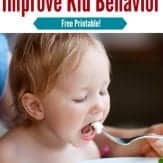
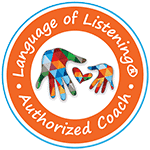
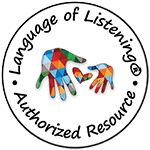
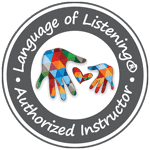
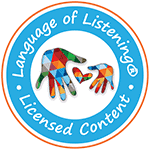








Great article! My son is the same. Even breakfast cereal can make him so hyperactive and aggressive – my jaw literally drops open when it happens. The change in behaviour is quick and dramatic.
I find that the Paleo diet really helps my kids get lots of nutrient dense foods and keeps them full of energy but not too hyperactive!
It’s one thing to say that beef includes a bunch of “good” stuff. It’s quite another to move and say there’s “no downside” to consuming it! Yikes! There are plenty and reasons. It to consume beef that far outweigh the benefits listed (that can be found in other foods). He is an amazing 100% science based resource if you’d be interested in reconsidering or at least looking at all the evidence. You’ve made a very dangerous and misguided statement!
http://nutritionfacts.org/topics/beef/
Every food has pros and cons. In a perfect world, we would only eat an organic plant-based diet free of toxins and synthetics. This is simply not realistic, and in truth, the majority of families in industrialized nations will consume beef, fish, grains, vegetables, sugar and countless toxins and synthetics contained in the processed food we eat. The goal of this post is to offer readers healthier choices to maximize the nutrients their kids get each day…it might mean swapping a box of traditional mac and cheese for an alternative listed in the post. We are all doing the best we can. My best advice is to test each food with your body and see what happens. Everything in moderation.
Yes!! I totally agree!!! We started a whole food plant based diet 3 months ago, and the positive changes in my one child are incredible. That being said, I would never give my kids dairy or meat again, it’s negative in every way from environmental to health. Dr. Greger has a great site, you should check it out!
There is in fact a downside to incorporating these foods, which is oxalates. Both chia seeds and quinoa have very high levels, as does spinach and many kale varieties. We have stopped eating these foods almost completely, due to very high levels in our bodies.
Every food has pros and cons. In a perfect world, we would only eat an organic plant-based diet free of toxins and synthetics. This is simply not realistic. The goal of this post is to offer readers healthier choices to maximize the nutrients their kids get each day…it might mean swapping a box of mac and cheese for an alternative listed in the post. We are all doing the best we can. My best advice is to test each food with your body and see what happens. Everything in moderation.
This article has some great suggestions! The
only part I question is the part about quinoa. Quinoa is not easy to digest! I found this out when I began
eating it myself and found myself with a stomach ache and intestinal pain. Quinoa is actually coated
in a toxic substance called saponin which is a natural
pest deterrent in nature but can irritate the lining
of your stomach. Once you are sensitized to it, the reaction gets worse. Some say rinsing the quinoa
will help but I didn’t find this myself.
Interesting. I’ve found that every food has pros and cons. Another reader shared that both salmon and beef are toxic to our bodies. In a perfect world, we would only eat a plant-based organic diet that wasn’t exposed to any toxins or pollutants. My best recommendation is to do what is best for your body and your diet 🙂
also chia seeds in moderation and make sure to soak first or blend to powder. and in moderation.
I love this article and find it super helpful. The info as well as the meal suggestions. Thank you for tackling this tricky topic and all the research involved!
You are so welcome!
Quinoa, potatoes, as well as many wheat products are very difficult for mi to digest.
Good artical..
I’m from Tasmania! I always knew my kids meltdowns were worse than anywhere else in the world!
I certainly strive to get these nutrients via food….however do u have a great kids multivitamin u would suggest to compliment and assist in it?
I do! We use Young Living Kids MightyVites. Part of the issue with vitamins is many of them contain stuff that isn’t bioavailable to our bodies…meaning, it technically contains what it says, but the body doesn’t actually absorb it. Young Living standards are higher than organic and everything is plant based. Another brand that I recommend is Shakalee. Feel free to shoot me a direct email at lauren@themilitarywifeandmom.com if you’d like to chat more.
Great post.I would like to share few information.
Contrary to what the advertisements claim, many foods that you give your child are bad for their brain. Breakfast cereal, processed fruit juices, instant noodles and sugary drinks are extremely harmful for your baby’s brain. Breakfast bars, muffins and bagels are also equally bad. Frozen waffles, prepackaged sandwiches, sweetened non-fat yogurts are more foods that cause harm to your child’s brain. Tea, coffee, and soda are also bad for your little one’s brain.
https://parentinghealthybabies.com/worst-food-childs-brain/
What do you feed your children? I need help – I usually offer oatmeal (no thanks mommy) , cantaloupe (usually a yes) yogurt, bananas when he’s not backed up, but sometimes he wants plain Cheerios or pancakes. I’ve tried smoothies (a big no) and he hates eggs.
My son is 3 now, and I have always tried to give him non processed foods since he was a baby. Now he refuses to try pretty much any vegetable except avocado (which isn’t even a vegetable!) and berries/apples. He likes chicken, hummus and yogurt mostly. I’ve put veggies and fruits on his plate every meal and still he won’t try them. Help please! I’ve tried “Dino juice” (spinach smoothies with banana and pineapple) and other hidden foods but no go. I eat healthy meals and encourage him with the same foods I’m eating but he still refuses.